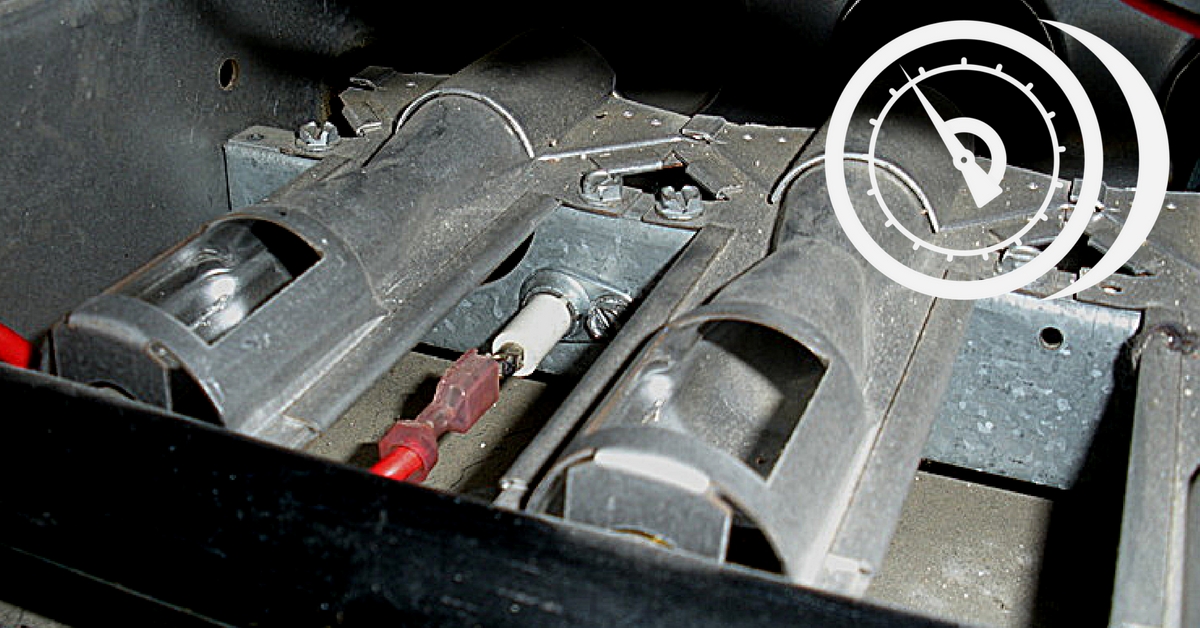Get Tech Tips
Subscribe to free tech tips.
Does Mass or Volume Move Heat?

I once heard someone say, and have since repeated many times that BTU's ride on the back of Cubic Feet of Air or CFM. As I've learned more I've come to the conclusion that the weight or mass of the air passing over the evaporator coil is far more important to understand both in terms of delivering BTUs and in understanding how different motors work.
In other words, CFM, or cubic feet per minute, is the measurement we're most familiar with, right? But what if I told you that Lbs per minute (mass flow rate) could give us an even clearer picture of how air carries heat? Yep, that's right – mass flow rate is where it's at when it comes to understanding the thermal properties of air.
Think of air passing over an evaporator or a furnace heat exchanger as a sponge soaking up or squeezing out heat. The more sponge material (i.e., air mass) you have, the more heat it can absorb. Air density plays a big role here, like the difference between a thin, flimsy sponge and a thick, sturdy one.
So, what affects air density? Well, there are a few factors, like temperature, altitude, and humidity. Warm air is lighter, while cold air is denser. Air density also decreases as we go up in altitude. And when it comes to humidity, moist air is actually less dense than dry air.
Now, let's talk about how motors and controls can compensate for these changes in air density. It's kind of like our lungs and how our bodies adapt to maintain blood oxygen levels. When we exercise, our body needs more oxygen, so our breathing rate and depth increase. When we're at high altitudes, our body produces more red blood cells to carry oxygen more efficiently. In both cases, our body adjusts to the situation to make sure we get enough oxygen.
Just like our lungs, HVAC systems can also adapt to changing air density. Some motors and controls, like ECM (electronically commutated motor) and VFD (variable frequency drive) strategies, allow the blower to correct for lighter air and maintain a consistent mass flow rate.
On the other hand, PSC (permanent split capacitor) motors don't compensate for changes in mass flow or static pressure. So when the air density is low, PSC motors produce less airflow and draw less current.
ECM motors, however, are quite versatile. They can be programmed to produce a fixed torque, speed, or airflow, which means they can adjust to different situations. If the air density is low or there's restricted airflow, ECM motors can actually draw more current and spin faster to maintain the desired mass flow rate.
Now that we've covered the basics, let's dive deeper into the properties of air – density, mass, and volume – and see how they relate to each other.

Air density (ρ) is a measure of how much air mass (m) is packed into a given volume (V). The formula is ρ = m/V. It's like a packed stadium – the more people squeezed in, the denser the crowd.
When we talk about mass flow rate, we're referring to the amount of mass passing through a given area per unit of time. In our case, it's Lbs per minute. This measurement gives us a better understanding of how air carries heat, since it takes into account the air's mass and not just its volume.
Volume flow rate (CFM), on the other hand, is the amount of air that passes through a given area in a specific time. It doesn't directly account for air density, which is why it's less informative when it comes to understanding the heat-carrying properties of air.
Here's a little analogy to help illustrate the difference between mass flow rate and volume flow rate. Imagine a highway filled with cars (air
molecules). The mass flow rate would be like counting the total weight of all the cars passing through a toll booth every minute, while the volume flow rate would be like counting the number of cars passing through the booth per minute, regardless of their weight. The mass flow rate tells us more about the overall “weight” of the traffic and its potential to carry heat, while the volume flow rate only tells us about the “quantity” of the traffic. Imagine one road full of tractor trailers and the other full of motorcycles. If you just counted vehicles you would have no idea on the payload capacity… in this case, heat.
Now, let's go over some practical applications and see how mass flow rate plays a crucial role in HVAC systems.
When it comes to heat transfer, we know that mass flow rate is the key to understanding how effectively air can carry heat. For example, when designing a cooling system, we want to make sure it can handle the heat load of a building. By focusing on mass flow rate, we can ensure that the system is properly sized to provide sufficient cooling capacity.
In addition, understanding mass flow rate can help HVAC technicians troubleshoot and optimize system performance. By measuring and analyzing mass flow rate data, techs can identify potential issues, such as inadequate cooling, poor air distribution, or high energy consumption. They can then make adjustments to the system, such as increasing or decreasing fan speed, to improve performance and efficiency.
Finally, let's look at how HVAC control strategies can be tailored to adapt to variable air density and maintain a consistent mass flow rate. As we mentioned earlier, ECM motors can be programmed to produce a fixed torque, speed, or airflow. This flexibility allows the motor to adjust its performance to accommodate changes in air density, ultimately ensuring that the system delivers the desired mass flow rate.
Another example of a control strategy that can be programmed to adjust for variable air density is the use of VFDs. VFDs can modulate the speed of a motor, allowing it to compensate for changes in air density and maintain a constant mass flow rate. This type of control strategy can help maintain capacity even in variable air mass or variable load conditions.
In conclusion, understanding the difference between volume flow rate and mass flow rate is essential for professional HVAC technicians. By focusing on mass flow rate, we gain a better understanding of how air carries heat and can design and optimize systems accordingly. By implementing control strategies that adapt to variable air density, such as ECM motors and VFDs, we can ensure that our HVAC systems deliver consistent performance and maintain the desired heat-carrying capacity of the air.
— Bryan










Comments
This is great, I’m becoming an instructor and have been viewing your emails for awhile. Thank you for the nicely put information. I’ll be using it on future classes. Again thank you and keep up the great work you provide.
This is great, I’m becoming an instructor and have been viewing your emails for awhile. Thank you for the nicely put information. I’ll be using it on future classes. Again thank you and keep up the great work you provide.
achat kamagra: Kamagra Oral Jelly pas cher – Acheter Kamagra site fiable
achat kamagra: Kamagra Oral Jelly pas cher – Acheter Kamagra site fiable
pharmacie en ligne avec ordonnance: Pharmacies en ligne certifiees – pharmacie en ligne pas cher pharmafst.com
pharmacie en ligne avec ordonnance: Pharmacies en ligne certifiees – pharmacie en ligne pas cher pharmafst.com
acheter mГ©dicament en ligne sans ordonnance [url=https://pharmafst.shop/#]Medicaments en ligne livres en 24h[/url] pharmacie en ligne livraison europe pharmafst.shop
acheter mГ©dicament en ligne sans ordonnance [url=https://pharmafst.shop/#]Medicaments en ligne livres en 24h[/url] pharmacie en ligne livraison europe pharmafst.shop
Acheter Kamagra site fiable Kamagra Oral Jelly pas cher or Achetez vos kamagra medicaments
http://ns.km1003.keymachine.de/php.php?a%5B%5D=cialis+without+doctor+prescription kamagra livraison 24h
[url=https://toolbarqueries.google.com.mx/url?q=http://kamagraprix.shop]kamagra gel[/url] Kamagra Commander maintenant and [url=http://forum.orangepi.org/home.php?mod=space&uid=5057934]Achetez vos kamagra medicaments[/url] kamagra 100mg prix
Acheter Kamagra site fiable Kamagra Oral Jelly pas cher or Achetez vos kamagra medicaments
http://ns.km1003.keymachine.de/php.php?a%5B%5D=cialis+without+doctor+prescription kamagra livraison 24h
[url=https://toolbarqueries.google.com.mx/url?q=http://kamagraprix.shop]kamagra gel[/url] Kamagra Commander maintenant and [url=http://forum.orangepi.org/home.php?mod=space&uid=5057934]Achetez vos kamagra medicaments[/url] kamagra 100mg prix
kamagra gel: kamagra 100mg prix – Kamagra Commander maintenant
kamagra gel: kamagra 100mg prix – Kamagra Commander maintenant
https://kamagraprix.com/# kamagra pas cher
https://kamagraprix.com/# kamagra pas cher
Tadalafil 20 mg prix sans ordonnance: cialis sans ordonnance – Tadalafil sans ordonnance en ligne tadalmed.shop
Tadalafil 20 mg prix sans ordonnance: cialis sans ordonnance – Tadalafil sans ordonnance en ligne tadalmed.shop
olympe casino avis: casino olympe – olympe casino
olympe casino avis: casino olympe – olympe casino
Thanks Bryan; so how does the ECM motor and VFD driven airside system know the mass flow rate of the air being moved? Would this apply to off-the-shelf residential systems?
Thanks Bryan; so how does the ECM motor and VFD driven airside system know the mass flow rate of the air being moved? Would this apply to off-the-shelf residential systems?
Kamagra Commander maintenant: kamagra pas cher – kamagra en ligne
Kamagra Commander maintenant: kamagra pas cher – kamagra en ligne
To leave a comment, you need to log in.
Log In